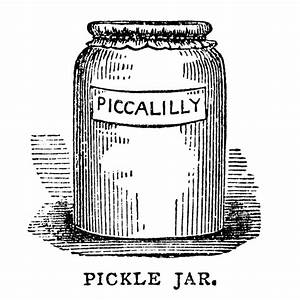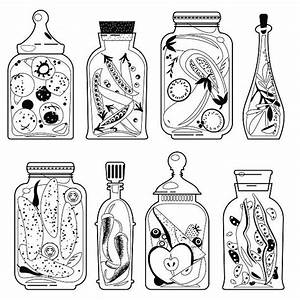
Salty Sam’s Fun Blog for Children
Number 502
Preserving Food
Hello Everyone

My Auntie Alice was busy turning the last of her summer fruit into jam this week. There are no more strawberries but the plums make nice jam.
Nowadays, we are lucky that we can buy fruit and a huge variety of other foods from all over the world all year round.
We can also freeze food and keep it in freezers for months on end.
Using a fridge every day can keep food for much longer than left outside in the room.
The back of the fridge is the coldest part and the door is the warmest. This is where you can keep sauces and dressings and drinks.
You can put nuts and seeds in the fridge in airtight containers to prolong their life. Stale nuts are really yucky!
Not all goods need to be kept in airtight containers.
Look at the containers your food is sold in. lf there are holes in the bottom of the container, like berry boxes, the food needs to be kept in containers with air circulation.
Preparing food, like packed lunches, too far in advance is not a good idea. Once food is cut, it starts deteriorating.
Fridges and freezers are really helpful to us, and a lot of people in the world have plenty of food to put in them.
Of course, this has not always been so.
Until roughly a hundred years ago, people were lucky if they were constantly well-fed and many people knew what it was like to go hungry.
ln recent times, farmers have taken to planting winter crops out in their fields and are unhappy if the season is especially cold or wet and the plants don’t grow very well.
When humans moved from being hunter-gatherers to become farmers thousands of years ago, the situation was very different.
ln the north of the northern hemisphere, plants don’t grow as well in winter as they do in the summer. People had to find a way of getting through the winter by ensuring that they had enough food to see them through.
They would also have to have a huge pile of fire wood ready to hand to use as fuel. Fires would be used indoors to light and heat a house and also cook food on through the cold and gloomy winter days.
Many animals would have been slaughtered at the beginning of the winter.
This was known as the white harvest.
November was sometimes referred to as the blood month.
There would have then been more animal feed left for the animals that remained. These animals would have babies the following spring and summer in order to increase the stock numbers again.
Cows don’t usually have more than one baby at a time but sheep can have two or three babies at a time and pigs can have many babies in one litter.
The meat would have been stored and the fat would have been made into candles. These were called tallow candles. They were smelly and created a lot of smoke but they were easy and cheap to make for people who could not afford the more expensive, smokeless, beeswax candles.
Meat and fish was preserved by smoking or rubbing in salt or soaking in brine (salty water).
ln the roundhouses people lived in about 2,000 years ago and more, meat was hung from the ceiling and the smoke from the fire in the centre of the large communal living space constantly sent smoke up into the roof space where the pieces of meat were kept.
Salt was always a precious commodity (useful thing to sell) throughout the ancient world.
There were also wild animals to hunt, but catching wild animals was always more work than catching domesticated ones.
We still use smoke and salt to preserve food today, you can have smoked meat, fish and cheese. The smoke adds flavour to these foods as well as helping them to last longer. But in modern times, food is hung on racks and put into a special shed called a smoke house.
We also use vinegar and sugar to preserve food too.
We use vinegar to pickle things like little onions and gherkins. Some countries in Europe that have long, snowy winters have long traditions of pickling all sorts of vegetables like cabbage in vinegar or brine. They might keep their preserves in glass jars or big, wooden barrels. They also make salami which can be stored for longer than fresh meat.
There is also a great tradition on the continent of foraging for wild mushrooms and pickling them and drying them. One way they are dried is to thread them onto a thin thread so that the air can get to each mushroom or slice of mushroom and they will dry over time when they are hung up.
They can then be put into soups and stews.
Herbs can be strung up in bunches from the ceiling of a pantry.
Sugar can be used to make fruits into jam, chutneys and piccalilli.
Oranges are made into marmalade.
Before sugar was widely available, fruit could be dried.
Fruit can be dried out in the sun or in the low heat of an oven.
At Christmas time, you will notice how we traditionally feast on foods that are preserved from the end of summer harvests.
We eat nuts that last well when stored.
We make Christmas cake, Christmas pudding and mince pies out of dried fruits like sultanas and currants.
There are a lot of dried figs and dried dates in the shops just before Christmas too. These fruits are imported. Figs are from fig trees and dates are from date palms.
Spices are also used to preserve food. You may see pickling spices in jars or pickled onions or gherkins. These will make the food taste nicer than if it was pickled in vinegar alone.
Nowadays, we can freeze fruit and vegetables from our own gardens. lt is usually better to process your crops before they are frozen.
Tomatoes can be made into pizza sauce, fruit can be stewed ready to be put in pies and vegetables can be blanched (briefly put into boiling salt water) to better preserve them.
Canning is also a relatively new way of preserving food to keep it fresh enough to eat.
Although a party of explorers in the 19th century walking across the frozen arctic actually died of metal poisoning because they were eating so much canned food.
Don’t worry, cans are not sealed up with poisonous lead nowadays!
And l would like to finish this week’s blog post with an interesting story.
Once upon a time, there was a boy who lived in New York in America called Clarence.
He came from a large family of lots of brothers and sisters.
He was born in 1886.
From a young age he was very interested in studying nature and taught himself taxidermy, which is the craft of stuffing and mounting dead animals.
When he went to college he was very good at science and picked up a passion for collecting insects.
ln his first summer holiday at college, he worked as an assistant naturalist with the Department of Agriculture helping farmers get rid of predators like coyotes – no Roadrunner wasn’t there too. Later he got a full time job with the department.
He worked in the American West, and then went to Labrador on the east coast of Canada where he became interested in learning about how to preserve food by fast freezing. The local lnuits showed him how to do it.
He discovered that if you freeze fish at very low temperatures, it freezes instantly, once thawed the fish tasted fresh and very importantly retained its structure well too.
This freezing method was much better than any commercial company had used before.
Clarence Birdseye realized that this new method could make him a lot of money.
lf you like my blog, please support it by telling all your friends and followers about it.
Thank you!
And see you again next Fun Friday!
Love and kisses
Salty Sam

www.christina-sinclair.com


Bill and Bob’s Joke of the Week![]()
![]()
Bill: What is the definition of a vegetarian?
Bob: Someone who is a useless hunter?

Salty Sam © Christina Sinclair 2015
Unauthorized use and/or duplication of material from this blog without express and written permission from this blog’s author and owner is strictly prohibited.
Links may be used to www.christina-sinclair.com

Picture Gallery
 A Celtic roundhouse
A Celtic roundhouse
 A roundhouse from the Bronze Age
A roundhouse from the Bronze Age
 Pickled peppers
Pickled peppers
 Gherkin
Gherkin


Clarence Birdseye


 THE SALTY SAM NEWS DESK
THE SALTY SAM NEWS DESK

This week, I have given you a really old-fashioned preserving recipe to try out for yourself. If you are growing your own vegetables and you have crops too big to eat straight away this hot pickle recipe is a good way of making sure none of your harvest goes to waste.
Cooking is good maths practice for you because you have to deal with numbers when you weigh out the ingredients.
This hot pickle recipe is good for using up lots of mixed vegetables from the garden. You can use cauliflower, green beans, courgettes, cucumber, peppers, carrots, sweetcorn and onions. You can try different combinations through the season to see which you like best.
You must plan ahead though. You need 24 hours to soak your vegetables ready for pickling so choose two consecutive days that you will have time to work on your recipe.
The pickle needs at least a month to mature so make a note of the date it is made on the label.
You can decorate your labels with pictures if you like.
Use your oldest stock in the larder first. This is called rotating your stock.
INGREDIENTS
900g/2lb vegetables of your choice
1 large cauliflower
2 large onions
2 tablespoons of flour
225g/8oz sugar
1 tablespoon turmeric
60g/2oz strong English mustard powder
900g/1½ pints pickling vinegar
60g/2oz salt
METHOD
- Dissolve the salt in 1.2 litres/2 pints of water
- Cut up the vegetables into very small pieces and put them into the salty water to soak for 24 hours
- The next day drain the vegetables off
- Rinse them and blanch them in hot water
- Put the four dry ingredients into a bowl and mix
- Add a few drops of the vinegar and mix up a paste
- Put the paste into a saucepan and add the rest of the vinegar
- Bring to the boil
- Turn the heat down and simmer the liquid for 15 minutes
- Add your vegetable pieces being careful not to splash yourself and coat them well
- Spoon your piccalilli into sterilized jars – unlike jam you have to make sure that you move the vegetable pieces around to make sure you have no air pockets left in the jars
- You must use vinegar-proof lids
- Store in the dark to let your product mature
- It can be used after a month – make a note on your calendar to remind yourself
This pickle would be popular at a barbecue to go with the burgers and salad. It also goes well with bread and cheese.

And to finish – can you put parts of the body into these gaps?
Fish –
A – of bananas
A – of a rice pudding
An – of a potato
A – of celery
A – of an artichoke


*********************
TO ADVERTISE ON THIS BLOG
PLEASE CONTACT:
christina.sinclair.ads@aol.co.uk
*********************

 Quick Quiz
Quick Quiz
What is the difference between a raisin and a sultana?




lt’s the Weekend!

HOW TO MAKE A LAVENDER CLOWN
People preserve all sorts of crops when they are harvested.
Herbs can be dried and stored. Lavender and potpourri can be put into bags to put scent into drawers.
This little clown is lavender-coloured but you could make him in pink or blue instead.
Of course, you must put your dried lavender flowers into a cloth sachet before you insert it into the clown’s tummy because the little flowers will fall through the knitting otherwise.
Leave the clown in a drawer or put a loop on his back or shoulders to hang him on a coat hanger. If you want to put the loop at the top of his hat, it must be sewn onto his head first.

FRONT AND BACK (KNIT TWO)
Using 4mm knitting needles and lavender-coloured dk yarn cast on 12 stitches
Knit 16 rows of stocking stitch
Change to white yarn
Knit 8 rows of stocking stitch
Don’t cast off – leave a length of yarn for sewing up when you cut off your yarn and leave your stitches on this yarn
LEGS (KNIT TWO)
Using 4mm knitting needles and white yarn cast on 10 stitches
Knit 10 rows of stocking stitch
Change to lavender yarn
Knit 4 rows of stocking stitch
Don’t cast off – leave a length of yarn for sewing up when you cut off your yarn and leave your stitches on this yarn
ARMS (KNIT TWO)
Using 4mm knitting needles and white yarn cast on 8 stitches
Knit 8 rows of stocking stitch
Change to lavender yarn
Knit 2 rows of stocking stitch
Don’t cast off – leave a length of yarn for sewing up when you cut off your yarn and leave your stitches on this yarn
HAT (KNIT TWO)
Using 4mm knitting needles and lavender-coloured yarn cast on 12 stitches
Knit 2 rows of garter stitch
Change to purple yarn
Knit 2 rows of stocking stitch
Decrease 1 stitch at the beginning of each row until there are 2 stitches left, knit these together and cast off

TO MAKE UP
- Using over-sew stitching and with right sides together sew side seams of head, body and also the arms and legs using appropriate colours
- Turn right sides out and pull tops of head, feet and hands in tight
- Stuff the body, legs and arms with some stuffing and the ends of the yarn
- Bind a length of white yarn around the neck and pull in tight then secure ends and push inside the stuffing
- Bind a length of lavender yarn around the wrists and pull in tight then secure ends and push inside the stuffing
- Bind a length of lavender yarn around the ankles and pull in tight then secure ends and push inside the stuffing
- Add the purple French knot eyes before or after sewing up – wrap the yarn around your yarn needle twice
- Embroider French knot buttons onto the front of the chest using purple yarn and onto the front of the hat using lavender yarn
- Sew up the sides of the hat wrong sides together using appropriate colours as you work
- Sew the tops of the legs to the bottom of the body and the tops of the arms to the sides of the body from behind

Please note that the material on this blog is for personal use and for use in classrooms only.
It is a copyright infringement and, therefore, illegal under international law to sell items made with these patterns.
Use of the toys and projects is at your own risk.
©Christina Sinclair Designs 2015

Answers to the News Desk Quiz
Fish fingers
A hand of bananas
A skin of a rice pudding
An eye of a potato
A head of celery
A heart of an artichoke
 The spots on a potato are called eyes
The spots on a potato are called eyes

A head of celery

A stalk of celery

Artichokes


Quick Quiz Answers
They are both dried grapes but a raisin is dried naturally and a sultana is dipped in vegetable oil and then dipped in acid to speed up the drying process.
Sultanas are usually bigger and softer than raisins and they have a lighter colour than raisins too.
Tomatoes, apricots, figs and dates are also fruits that are commonly dried.
Pulses like lentils and beans can be dried and kept for a long time.
They provide very inexpensive protein.


Embroidery Stitches



